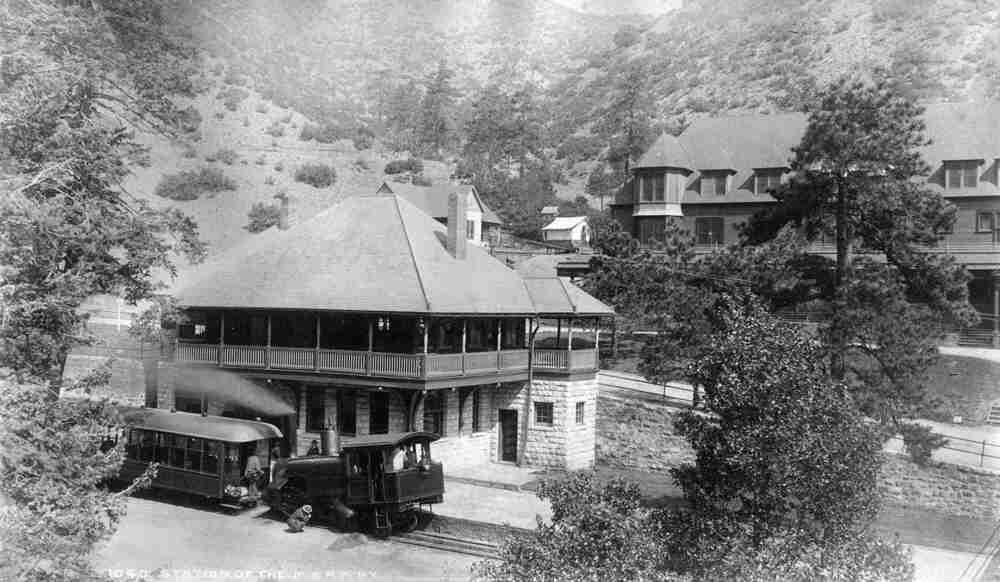Manitou and Pikes Peak Cog Railway
Full Article
The Manitou and Pikes Peak Cog Railway climbs the 8.9 miles to the 14,110-foot summit of Pikes Peak. The railway is the highest in North America and was built as a tourist attraction in the late nineteenth century. Other cog railways can be found on Mt. Washington in New Hampshire and throughout the Alps in Switzerland.
Zalmon G. Simmons, a New York–born inventor and founder of the Simmons Beautyrest Mattress Company, started the railway. In 1888, Simmons traveled to Colorado Springs to inspect telegraph insulators on the side of Pikes Peak. When it took two miserable days to scale the peak by mule, he decided to finance construction of the Manitou and Pikes Peak Cog Railway in 1889. The track, built by Italian laborers, opened in 1891. After losing money for years, Simmons sold the railway to local philanthropist and Broadmoor Hotel owner Spencer Penrose for a reported $50,000 in 1925. Today, the Broadmoor Hotel owns the cog railway.
Pushing a passenger train up a 14,110-foot mountain is no easy task. The first trains used were steam locomotives designed by Baldwin Locomotive Works in Philadelphia. Each of these trains had heavily tilted boilers to keep them level on the average 16 percent grade up the mountain. The railway had three steam locomotives named John Hulbert, Manitou, and Pikes Peak, which were later changed to Engines 1, 2, and 3. These engines were not coupled to the coach; they simply pushed the train car up the mountain and slowed it down during the descent. Each steam engine had to be filled with water three times during the ascent—once at the beginning, once halfway up, and a final time before the 25 percent-grade point called Big Hill.
A gasoline train car, believed to be the first of its kind in the world, was installed in 1938. Over time, the General Electric gasoline-powered engines replaced the steam engines. Steam engines were heavier and thus less likely to derail in snow than gasoline engines, so by 1958 the only steam locomotive still in use served to plow snow at the summit.
By 1964, the railway needed more locomotives. For the first time in its seventy-six-year history, the owners went abroad for new railcars. In late 1964, Swiss Locomotive and Machine Works (SLMW) delivered two red railcars to Colorado. These Swiss-made cars were so successful and reliable that SLMW delivered two more in 1968. As of 2014, all four original SLMW railcars were still in operation.
As the number of visitors grew during the 1970s, the Manitou and Pikes Peak Railway added two articulated, or semi-permanently connected, railcars built by SLM. This type of railcar was split in the middle, allowing it to make tighter turns on its track. The railway also constructed passing routes in several places along the mountainside. Originally, trains could only pass at the Mountain View siding, which allowed just three trains per day to travel up the mountain. With the addition of more passing areas, the railway can now send up eight trains per day.
Since its inception, the Manitou and Pikes Peak Cog Railway has taken thousands of tourists from the base station at 7,400 feet all the way up America’s Mountain to the Summit House at 14,110 feet.










